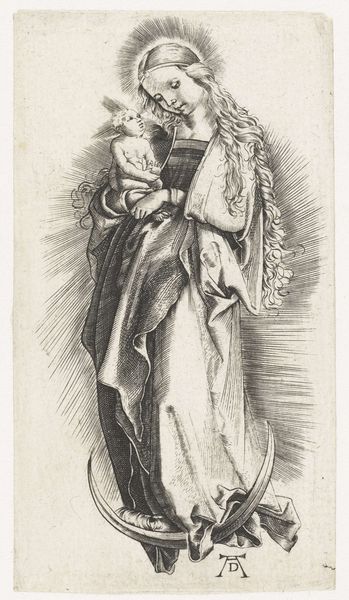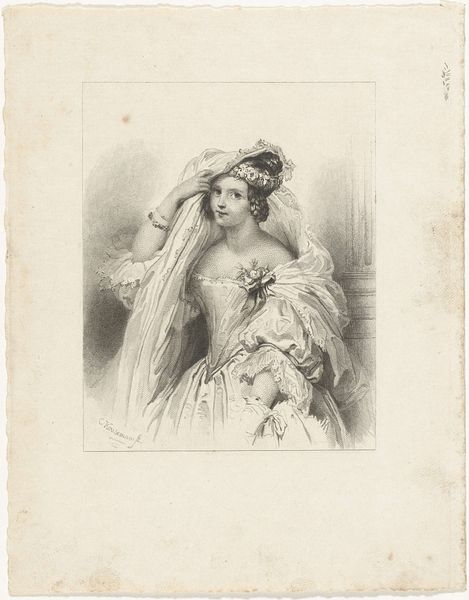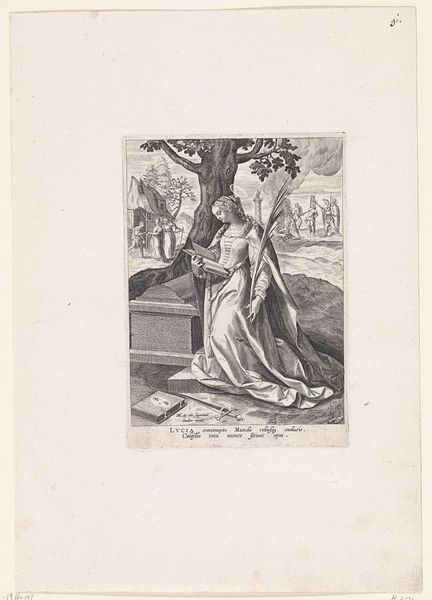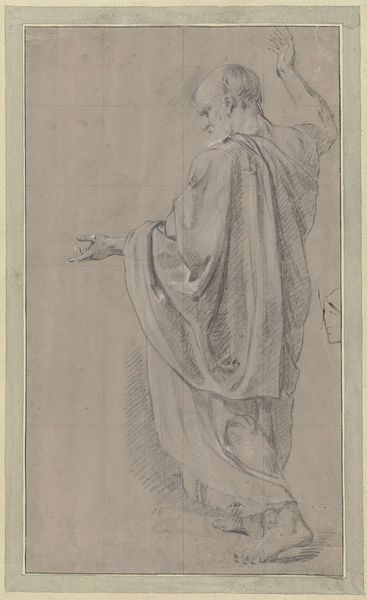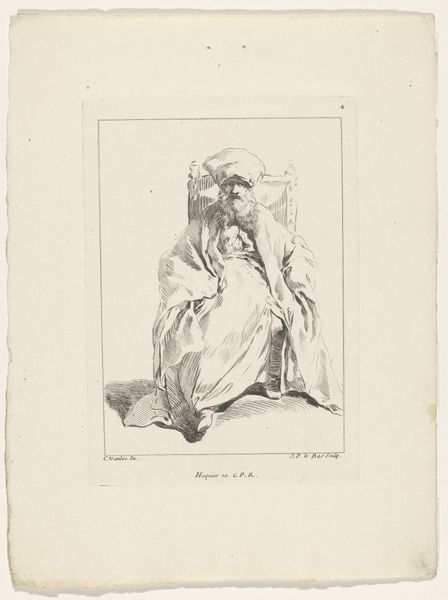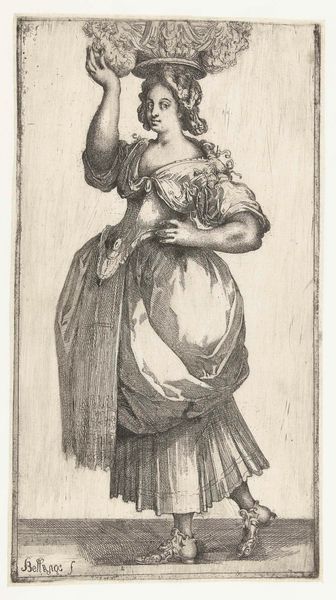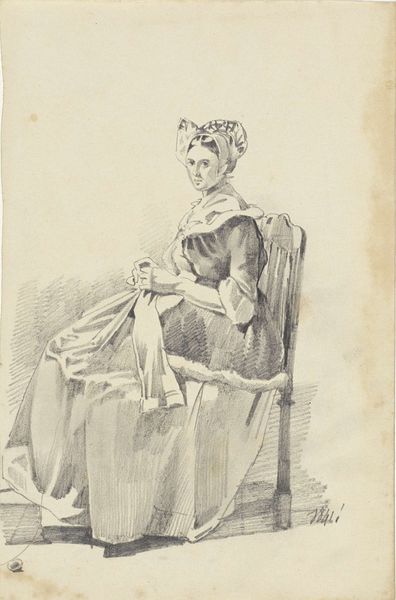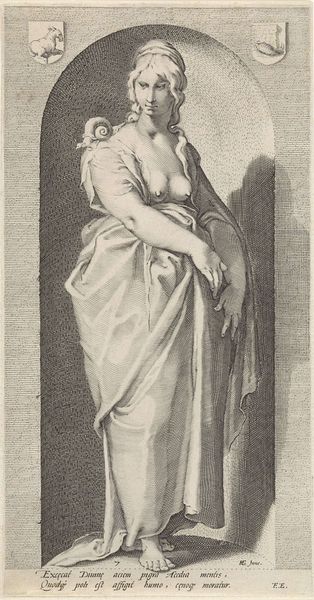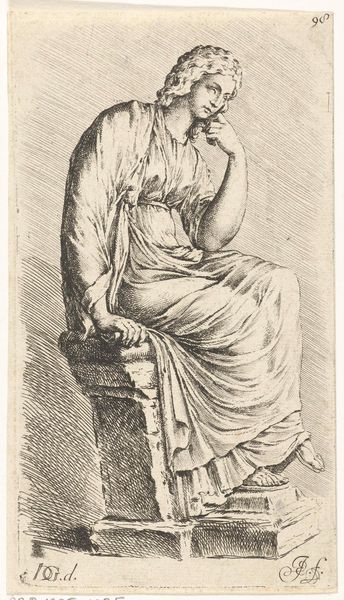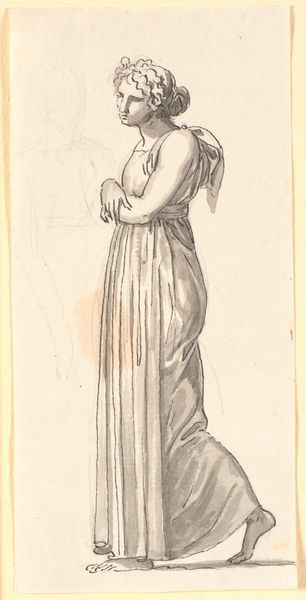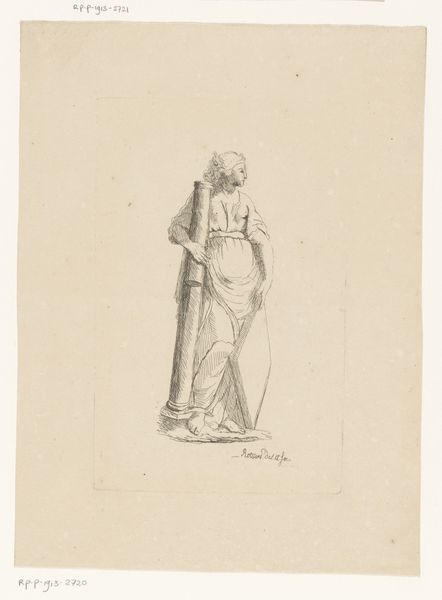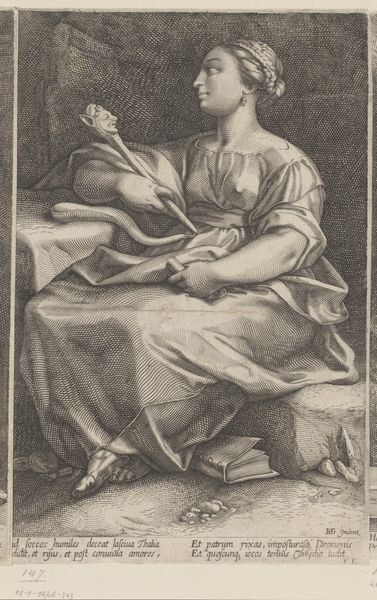
drawing, paper, ink
#
drawing
#
baroque
#
figuration
#
paper
#
ink
#
nude
Dimensions: height 222 mm, width 118 mm
Copyright: Rijks Museum: Open Domain
Curator: Let's consider this drawing, "Kariatide", crafted between 1668 and 1671 by Jan de Bisschop. It’s currently held at the Rijksmuseum. Editor: There's a definite theatricality to this image. The woman’s pose, draped in cloth, feels staged, as though she's an actor on a Baroque stage. The details really add to the image. Curator: Indeed. De Bisschop was a pivotal figure, a lawyer who later engaged in art theory and practice, establishing a drawing academy in The Hague around 1660. He frequently referenced classical sources, making works like this study on paper with ink. These were significant pedagogical tools. Editor: The caryatid figure itself is powerful, though the draping softens the classical severity usually associated with these architectural supports. I see symbols of burden, certainly, but also of feminine strength, literally upholding something. Is it just decorative garlands she holds, or does that garland have a specific reference? Curator: Caryatids are, of course, architectural metaphors turned literal – women carrying structural weight. De Bisschop, I believe, is examining the idea of artistic influence and tradition, represented in idealized, classicized forms, a cornerstone of artistic practice then. The garlands may be tied to concepts of celebration and civic pride. The artist certainly engages in an academic dialogue here. Editor: I see echoes of earlier traditions. The way she presents the garland, holding its weight with those muscular arms… there is also the implication of a victor offering laurels, or an indication of power. It seems, on the surface, like an innocuous pose, yet the layers are quite complex once we start picking them apart. Curator: And her nudity, strategically veiled, reinforces classical ideals while appealing to a contemporary audience who embraced sensuality within defined parameters of acceptability. De Bisschop shows us, through her pose, her adornment, and her semi-nudity, a society balancing on the edge of change in relation to previous paradigms. Editor: It really does highlight how symbols morph, and the weight imagery accrues over time. This seemingly simple drawing becomes a portal into so many layers of history. Curator: Exactly. It reminds us that artistic interpretation is invariably tied to socio-political dynamics that go well beyond initial, immediate perceptions.
Comments
No comments
Be the first to comment and join the conversation on the ultimate creative platform.
